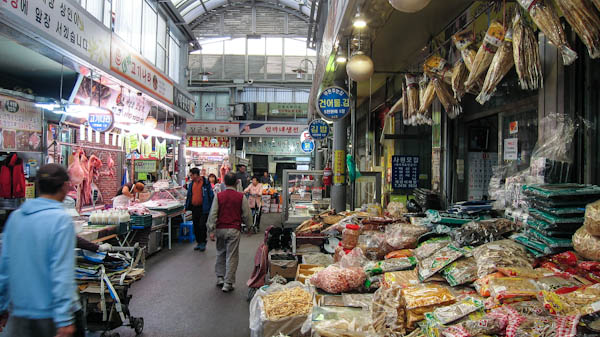
Amsa-dong Prehistoric Settlement Site, discovered in 1925, was once the location of a Neolithic village situated on the Hangang River over 6,000 years ago. The site was discovered in 1925 after a flood revealed buried earthenware pots. Excavation work did not begin until 40 years later in 1967.
After heavy rain in 1925, the Hangang River flooded and soil was swept away. After the water receded, earthenware and stoneware were exposed that had been covered for thousands of years.
Though the area was slightly excavated at the time of the discovery, it was not until 1957 that the site was thoroughly investigated by Kyunghee University and not fully excavated for another 10 years. In 1968, Seoul National University College of Education performed the first major and official excavation. From 1971 to 1975, the National Museum of Korea performed four separate excavations.
The site was the largest prehistoric settlement ever discovered in Korea.
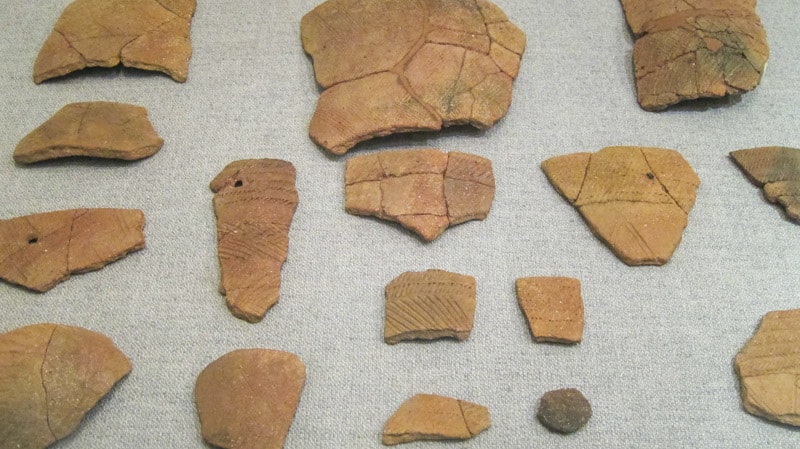
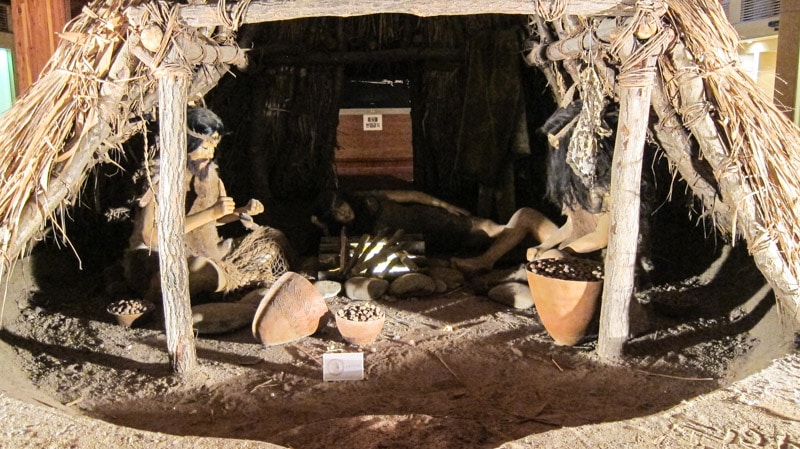
Excavations revealed about 30 pit houses, annexes, stone mounds, and other tools. The circular pits houses here were built into the sandy soil. They featured a rock furnace at the center and multiple supporting beams. Outside of the houses were storage pits and shell mounds which were found to have traces of charcoal, burnt soil, mold, and earthenware indicating the location of fires or furnaces.
Many sharp pieces of pottery, which are made from soil mixed with talc, can be found here along with stoneware including axes, spears, grinding stones, and arrowheads. Other miscellaneous tools and items uncovered here include fishing nets, bird bones, and acorns.
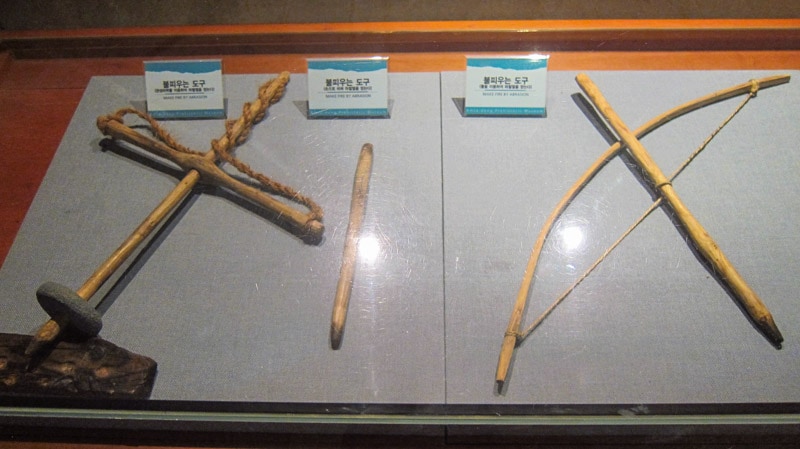
Through carbon dating, researchers found that the Amsa-dong Prehistoric Settlement Site was first settled in the Neolithic period (New Stone Age) between 3,500 and 6,400 years ago.
Excavations have found three separate strata, or layers, from different periods of history. The Neolithic period stratum contains comb pattern pottery. The Bronze Age stratum was found to contain min-patterned earthenware, bangchucha (used for weaving), and bronze arrowheads. The Baekje stratum was found to contain wooden jars, earthen coffins, and iron axes.
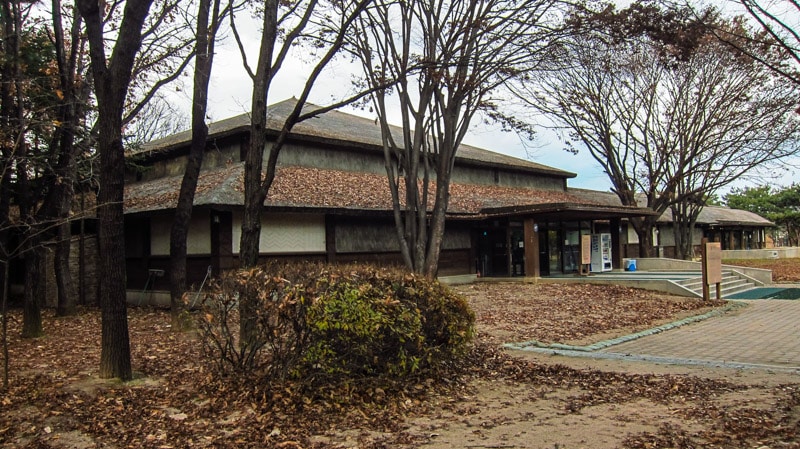
The Prehistoric Settlement Site Experience Hall and Exhibition Center features two halls with exhibits and relics that show what prehistoric life on the Korean peninsula was like and how the people lived.
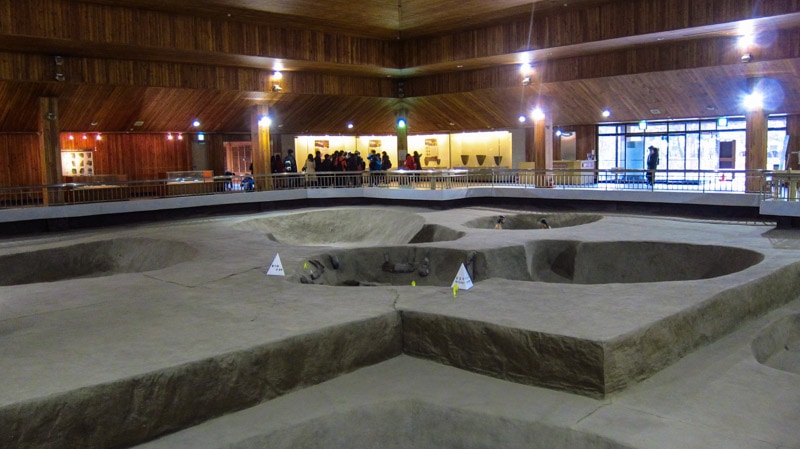
Exhibition Hall 1, which opened in 1988, encloses the actual excavation area of the fourth excavation done by the National Museum of Korea in 1975. The hall also displays eight hut sites, a storage pit, and a number of relics.
Exhibition Hall 2 uses models, videos, and an information search center to help visitors better understand the culture and life of the people who settled here thousands of years ago.
Amsa-dong Prehistoric Settlement Site Information
Hours
October - March: 6:00 AM - 9:00 AM
April - September: 5:30 AM - 9:00 AM
Closed on: Mondays & January 1
Admission
Adults (Ages 19-64): 500 won
Youth (Ages 7-18): 300 won
Seniors (Over 65): Free
Child (Under 7): Free
Address
158 Amsa-dong, Gangdong-gu, Seoul, South Korea
GPS Coordinates: 37.560687, 127.130385
How to Get Here
Take Subway Line 8 to Amsa Station (Exit 1).
Take Gangdong Bus 02 and get off at the fourth stop.
Cross the street to reach Amsa-dong Prehistoric Settlement Site.
Map
Official Website
http://sunsa.gangdong.go.kr/site/eng/content/Introduction_culture
Nearby Sights
Cheonho Park
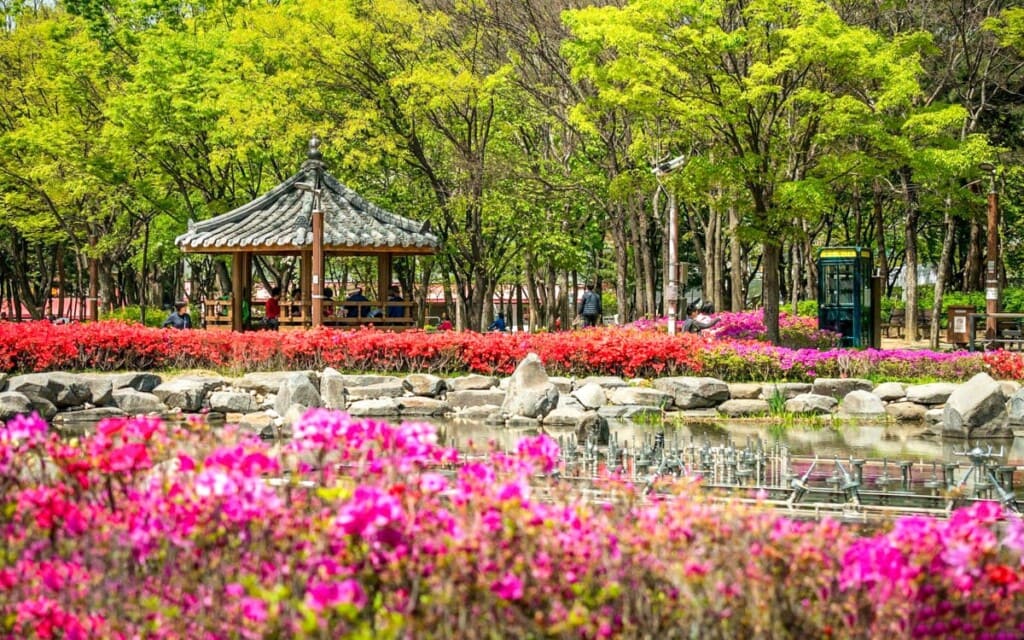
Cheonho Park is a small neighborhood park located in southwestern Seoul, not far from Gwangnaru Hangang Park and Amsa-dong Prehistoric Settlement Site. Though small, the park features a musical fountain, library, outdoor stage, and walking paths. There are also various…
Gwangjin Forest Naru Park
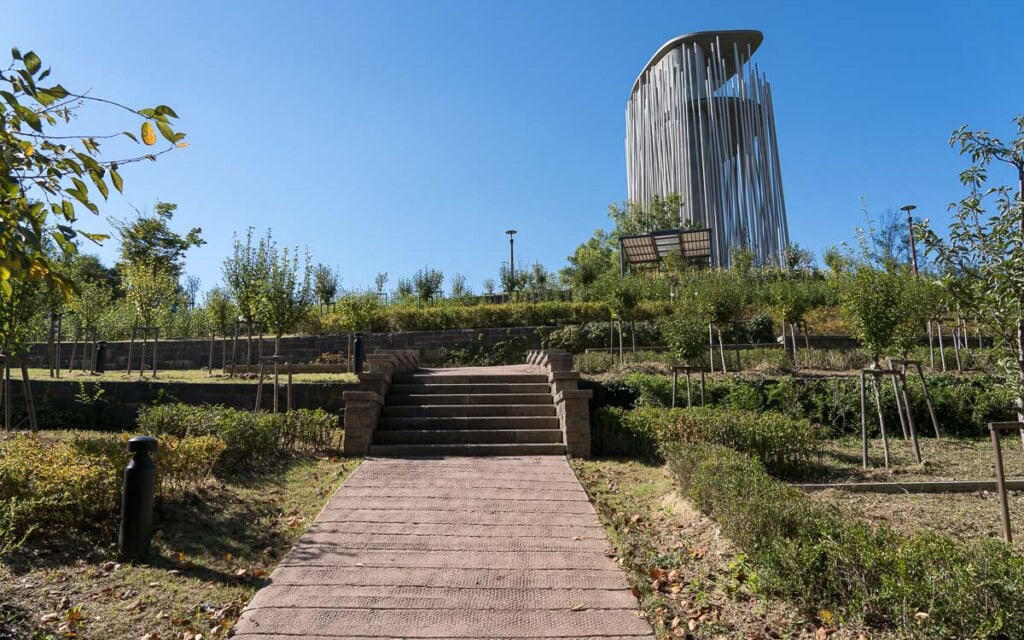
Gwangjin Forest Naru Park is a neighborhood park located in Gwangjin-gu, between Guui-dong and Gwangjang-dong, close to the Hangang River. The park has two sections on both sides of Cheonho-daero at the northern end of the Cheonho-daero Tunnel. Since the…
Techno Mart
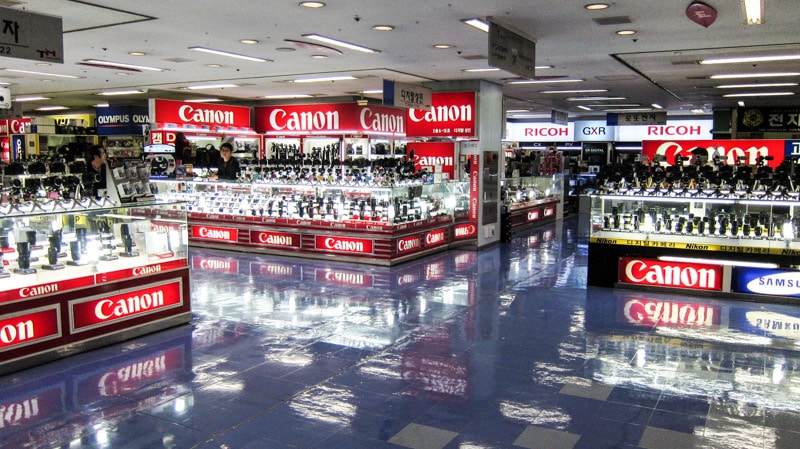
Techno Mart is an eight floor shopping mall and marketplace with over 2,000 electronic stores selling every type of electronics, appliances, and gadgets. If you are in Seoul and you need electronics at reasonable prices, then this in your place.…
Olympic Park
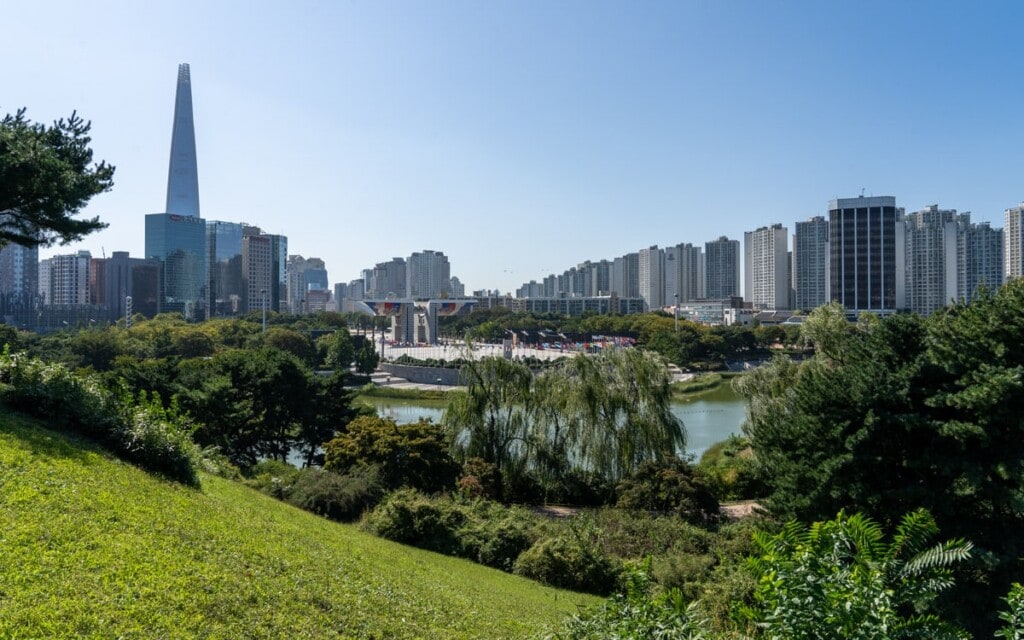
Seoul Olympic Park, or Olpark, is a large outdoor recreation area, sporting venue, and park that was built for the 1988 Summer Olympics. Just a few of the facilities built for the Olympics include a swimming pool, gymnastics arena, tennis…
World Peace Gate
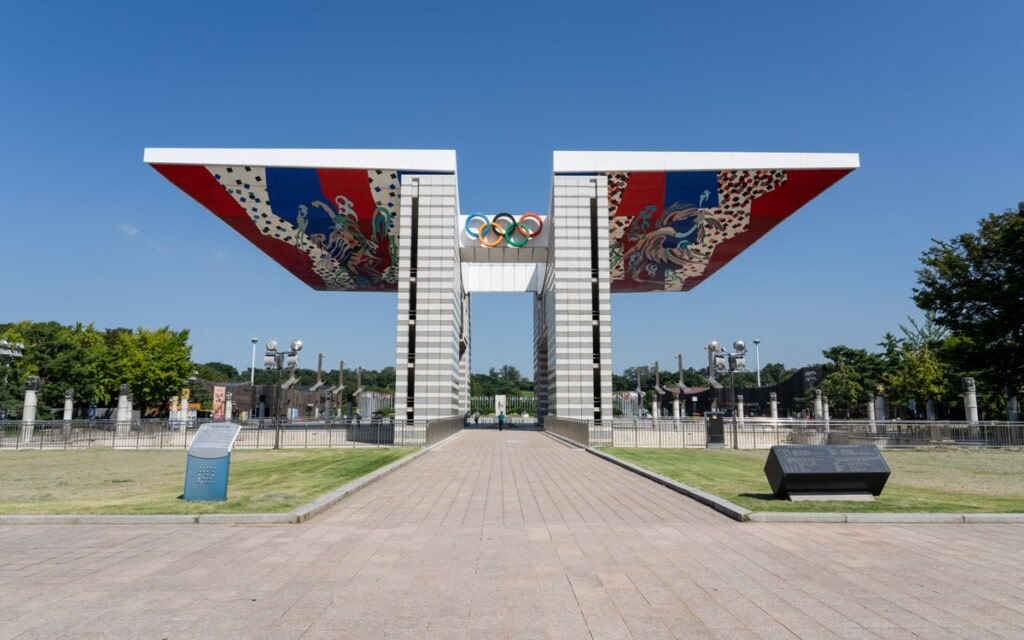
World Peace Gate is a colorful gate located at Olympic Park. It was built as a sign of peace and harmony for the 1988 Seoul Summer Olympics which took place in September and October, 1988. Construction began on December 31,…
Last Updated on Aug 4, 2025
